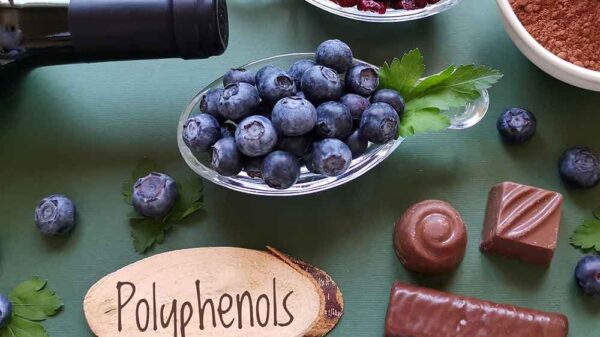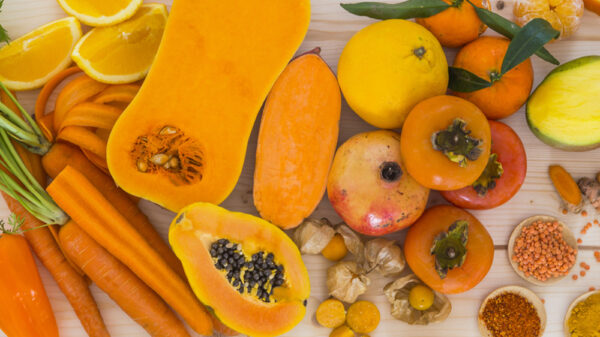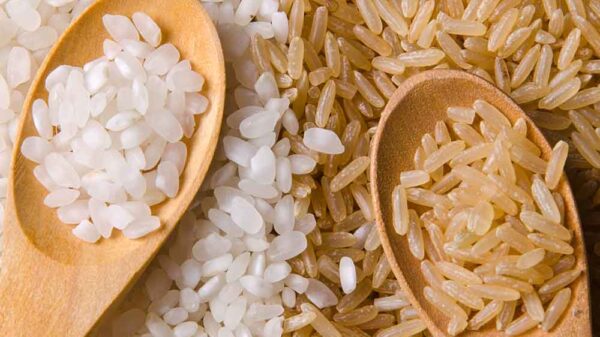The plant-based diet is becoming increasingly popular, and for good reason. Eating primarily plant-based foods is excellent for your health and supports healing from metabolic conditions such as type 2 diabetes, fatty liver disease, insulin resistance, high cholesterol, and cardiovascular disease.
The most challenging part of following a plant-based diet is figuring out what to eat that tastes good and leaves you feeling full and satisfied. If you find yourself asking, “what should I eat for dinner tonight?” on a regular basis, you’ve come to the right place. Here we give you tips and plant-based recipes to help you stick to your diet.
Benefits of a Plant-Based Diet
Before we dive into plant-based recipes, let’s take a look at a few of the benefits of following a plant-based diet.
Digestive Health
Digestion is one of the major areas that is improved by following a plant-based diet. When you’re eating primarily whole plant foods, you are incorporating tons of fiber into your diet. Fiber reduces inflammation in the digestive tract. When you eat insoluble fiber, it travels through the digestive tract intact and then sits in the intestines. Good bacteria that make up the microbiome then feed on the insoluble fiber and produce anti-inflammatory byproducts that then enter the bloodstream and reduce inflammation throughout the body. Eating a plant-based diet is therapeutic for issues like irritable bowel syndrome, diverticulitis, and inflammatory bowel disease.
Metabolic Health
Eating a plant-based diet is extremely healthy for metabolic health. Eating a diet low in meat and dairy naturally lowers your intake of harmful saturated fats, preservatives, added sugar, sodium, and other inflammatory products. Limiting these elements helps your insulin function more effectively while also lowering your cholesterol. On top of that, eating primarily plants increase your intake of antioxidants such as carotenoids and polyphenols, which supports mitochondrial health and improves energy production in all cells.
Cardiovascular Health
As mentioned above, following a plant-based diet naturally lowers your intake of saturated fat. Saturated fat from meat and dairy is a major contributing factor to inflammation and high cholesterol levels.
Downfalls of a Plant-Based Diet
Though these reasons aren’t technically downfalls, they are areas that you simply need to be mindful of as you follow a plant-based diet.
Avoid Processed Foods
Just because a food is labeled as “vegan,” this doesn’t automatically mean that it’s healthy. Vegan foods can be just as processed and non-vegan foods, and it’s important to take a look at the ingredients list and nutrition facts before you purchase a food item. In general, it’s a good idea to avoid packaged and processed foods like crackers and granola.
Steer Clear of Added Sugars
Even if a food is plant-based, it can still be processed and filled with added sugars that are harmful to your metabolic health. Always make sure to read through the ingredients list and check for sugars and syrups.
Stick to Whole Foods
Eating primarily whole foods is the healthiest way to follow a plant-based diet. Whole foods are foods that are unprocessed or minimally processed. Whole food recipes are the healthiest types of plant-based recipes.
Make Sure You’re Getting the Protein You Need
If you’re following a completely plant-based diet, it can be harder to get all of the protein you need to support your health. More specifically, it is more challenging to get balanced ratios of essential amino acids when following a plant-based diet. This is because animal proteins contain optimal ratios of essential amino acids, while most plant proteins are missing at least one essential amino acid.
In order to get the essential amino acids you need, it’s important to eat a variety of plant-based proteins throughout the day. Healthy sources of plant-based protein include nuts, seeds, whole grains, beans, and tofu. Eating several of these vegan proteins makes sure that your body is getting all of the essential amino acids required to function effectively.
Alternatively, you can take a high-quality supplement, which supplies essential amino acids in their individual form and in optimal ratios. This makes it easier to follow a plant-based diet without worrying about balancing your protein sources.

Plant-Based Recipes: Breakfast, Lunch, Dinner, and Snacks
Now let’s get into the fun stuff. In this section we give you easy plant-based recipes, so you are equipped with recipe ideas and never have to wonder what you should eat. Keep reading to find out more!
Plant-Based Breakfast Recipes
1. Protein-Packed Southwest Tofu Scramble
This is a flavor-filled alternative to scrambled eggs in the morning. The tofu and beans provide lots of protein, the veggies offer vitamins, and the sweet potato is backed with complex carbs and carotenoids. Here are the ingredients:
- Extra firm tofu
- Turmeric
- Taco seasoning
- Black beans
- Red bell pepper
- Onions
- Can of corn
- Sweet potato
- Olive oil
- Garlic
- Salt and pepper
- Lime
- Avocado
- Salsa
Prepare your ingredients by dicing your peppers and onions. Heat up a nonstick pan on medium-high heat. Drizzle the pan with a little olive oil, then sauté your peppers and onions until they are soft. Add in tofu, and use a wooden spoon to break up the tofu into crumbles. Sprinkle with turmeric, taco seasoning, salt, and pepper to taste. Drain the cans of corn and beans, and add to the pan. Stir together until combined and heated through. Turn off the stove and spoon the tofu scramble onto your plate. Top with fresh avocado, salsa, and a squeeze of lime. Serve with a slice of roasted slices of sweet potato.
2. Pumpkin Overnight Oats
- Canned pumpkin
- Rolled oats
- Ground flaxseeds
- Cinnamon
- Nutmeg
- Agave nectar or honey
- Fresh orange
- Raisins
- Soymilk
This recipe packs a punch of energy and antioxidants that will keep you going all day long. Oats and flaxseeds provide fiber and protein, while canned pumpkin provides a burst of antioxidant compounds called carotenoids.
To prepare this meal combine the rolled oats and flaxseeds in a jar and sprinkle with cinnamon and nutmeg. Add canned pumpkin, raisins, and a drizzle of agave nectar or honey. Be careful not to overload the oats with pumpkin. Canned pumpkin can taste a little bitter, so start out with just a couple of spoonfuls. Season and sweeten to taste. Sprinkle in raisins, add a squeeze of fresh orange, and fill the jar with soymilk until the oats are covered. For runnier oatmeal, add more soymilk. For thicker oatmeal, use less soymilk. Stir all ingredients together and allow to sit overnight. In the morning, you’ll have a prepared plant-based breakfast that can be eaten on the go!
3. Peanut Butter and Banana Sandwich
This is a simple breakfast, but it’s fast and cheap and filled with the nutrients that you need. The only ingredients needed include:
- Whole-grain bread
- Peanut butter
- Banana
- Ground flaxseeds
- Cinnamon
- Honey
First, toast two slices of whole-grain bread. Slather one piece of bread with peanut butter, and sprinkle with ground flaxseeds and cinnamon. Top with sliced bananas and drizzle with honey. Cover with the second slice of bread and enjoy!
Plant-Based Lunch Recipes
1. Plant-Based Mac n’ Cheese
This mac n’ cheese is so tasty, that even kids won’t realize it’s not the real thing!
- Cashews
- Nutritional yeast
- Plant-based butter
- Salt and pepper
- Spinach
Start by blending the cashews in a blender until smooth. Add in nutritional yeast and salt and pepper to taste. In a pan, melt plant-based butter and add the cashew and nutritional yeast mixture. Add in fresh spinach and allow to cook. Stir until the spinach is wilted, and then set aside. In a large pot on the stove, boil pasta of your choice. For extra protein, choose a lentil pasta or chickpea pasta. When finished, drain the pasta and pour it into the saucepan. Mix until the pasta is coated with sauce and spinach.
2. Chopped Kale Salad
A chopped kale salad is a perfect hearty lunch that provides tons of vegetables while also being tasty.
- Kale
- Spinach
- Sun-dried tomatoes
- Avocado
- Chickpeas
- Italian dressing
- Vegan feta cheese
- Pecans
- Fresh basil (optional)
Kale salad is easy to make on-the-go and to prepare ahead of time. First, start out by choosing your greens. Kale is packed with antioxidants and polyphenols that support metabolic health. You can blend kale with another favorite green for a little extra dimension of flavor, plus more antioxidants vitamins. For example, you can combine spinach and kale or arugula and kale. Place on a cutting board and cut and kale until both spinach and kale are in bite-size pieces. Now, the fun begins. Top your salad with any variety of healthy and delicious ingredients. For example, try adding sun-dried tomatoes, chickpeas, avocado, vegan feta cheese, crushed pecans, and fresh basil to your salad. Toss with low-fat Italian dressing, or keep the dressing on the side if you are packing the kale salad to go. Serve with the side of crusty, whole-grain bread to top off the meal.
3. Pesto Pasta Salad
Pesto pasta salad is an easy, delicious, and portable meal that you can take on the go.
- Premade vegan pesto sauce or ingredients to prepare your own pesto
- Whole-grain pasta
- Kale
- White beans
- Red onion
- Roasted red pepper
If you’re making your own pesto, combine pine nuts, olive oil, basil, arugula, nutritional yeast, garlic, salt, and pepper in a food processor or blender. Blend until the mixture reaches the consistency of pesto.
4. Barbecue Sandwiches
These plant-based sandwiches are a tasty, hearty alternative to the classic barbecue sandwich.
- Jackfruit (canned or fresh)
- Bottle of barbecue sauce
- Carrots
- Red cabbage
- Green Cabbage
- Onions
- Whole-grain buns
- Baked beans
- Garlic powder
- Salt and pepper
Jackfruit is becoming an increasingly popular substitute for pulled pork and other sandwich fillings, because of its hearty texture and versatile flavor. Though ripe jackfruit may smell sweet, its taste is mild, and it can easily support a savory flavor. If you are preparing fresh jackfruit, remove all yellow nubs from the fruit. If you are using canned jackfruit, simply drain it. Then, place the jackfruit in a pot of boiling water for a few minutes, to soften it. Combine jackfruit and your favorite barbecue sauce in an instant pot or slow cooker. Allow the jackfruit to cook until it is softened and can be easily pulled apart with a fork, to reach the consistency of pulled pork.
To create your coleslaw topping, thinly slice the onions, cabbage, and carrots. Toss in vegan mayonnaise, apple cider vinegar, mustard, garlic powder, salt, and pepper. Heat up the baked beans on the stove. When looking for baked beans, choose an organic brand that doesn’t have too much-added sodium and sugar.
Now, it’s time to assemble your sandwich. Assemble jackfruit, coleslaw, and baked beans on a whole-grain bun, and enjoy! Alternatively, coleslaw can also serve as a side dish.
5. Veggie Burgers
A veggie burger is an excellent alternative to a traditional deli meat and cheese sandwich. It’s helpful to have premade veggie burgers on hand to throw together these sandwiches in a pinch. Alternatively, you can prepare a batch of your favorite veggie burgers and store in the freezer until ready to use.
- Veggie burger patties
- Lettuce
- Onions
- Tomato
- Whole grain bun
- Mustard and ketchup
- Pickles
First cook the veggie burger patty according to directions. Then place on a whole-grain bun and top with lettuce, tomato, onions, pickles, mustard, and ketchup. Consume immediately or wrap in foil and take with you on-the-go.
Plant-Based Dinner Recipes
Here are a few dinner recipes that are great for either busy work nights or leisurely weekend evenings.
1. One-Pan Veggie Dinner
- Sweet potatoes
- Eggplant
- Butternut squash
- Onions
- Brussels sprouts
- Olive oil
- Thyme
- Oregano
- Garlic powder
- Salt and pepper
The easiest meals to repair are those that don’t require many moving parts. Nothing fits this description better than a dinner that only requires one pan. The most time-consuming part of this recipe is cutting up all of your vegetables. Begin by chopping up vegetables of your choice, such as sweet potatoes, eggplant, butternut squash, onions, and brussels sprouts. Chop into chunks and place into a bowl. Toss in olive oil, garlic powder, thyme, oregano, salt, and pepper.
2. Veggie Tacos
Think you need meat in tacos to make them taste good? Think again! You can make some delicious tacos just using plant-based ingredients. When making an easy on-the-go version of this dish, use all the same ingredients and roll into a plant-based burrito that you can easily wrap and foil and take with you to work.
- Vegan taco wraps (hard shells if you like crispy texture, softshells if you like softer textures)
- Brown rice
- Black beans
- Tofu
- Bell peppers
- Onions
- Salsa
- Avocado
- Lime
- Cilantro
- Taco seasoning packet, or your preferred Mexican seasoning
First, prepare the vegetables by sauteing in a drizzle of olive oil. Then, add black beans and tofu. Add the seasoning packet and allow to simmer until all of the flavors are melded together. Prepare brown rice. Layer a taco shell with brown rice and the filling, and top with salsa, fresh avocado, and a squeeze of lime.
3. Pizza with Cauliflower Crust
Being a plant-based diet doesn’t mean that you need to forgo pizza nights. Instead, you can make pizza night vegan-friendly.
- Cauliflower
- Mushroom
- Onions
- Spinach
- Green bell peppers
- Pizza sauce
- Cheese
- Red pepper flakes
- Garlic powder
- Oregano
- Basil
- Salt and pepper
First, get out your cauliflower crust or prepare a cauliflower crust using one of your favorite recipes. Cook the cauliflower crust in the oven for a few minutes till it’s slightly cooked. Now it’s time to add your toppings. Slather cauliflower crust with tomato sauce, and then sprinkle your seasonings on top of the sauce. Depending on your taste, you can sprinkle the pizza with red pepper flakes, basil, oregano, garlic powder, and salt and pepper. Add the chopped onion, mushrooms, green bell peppers, and spinach.
If you like part of your toppings on your pizza, prepare tofu crumbles to sprinkle on top of your pizza for protein. Prepared by heating a little bit of olive oil in a non-stick pan. Place a block of extra firm tofu in the pan, and use a wooden spoon to break up the tofu until it reaches the consistency of ground meat. Season with red pepper flakes, basil, garlic, and salt and pepper. Then sprinkle on top of your pizza.
Now, it’s time for one of the most important parts of the pizza: cheese. If you’re following a plant-based diet deviating from the plan occasionally isn’t going to hurt. So if you want to use a little bit of low-fat mozzarella cheese, then go for it. If you’re aiming to stick to the plant-based regimen, use a cheese prepared with plant milk. Alternatively, combine regular cheese and vegan cheese when topping your pizza. After you have topped your pizza with cheese, bake it in the oven until all the ingredients are cooked.
4. Thai Vegetable Stir-Fry
This meatless Thai vegetable stir-fry is a healthy and tasty way to prepare a hot vegetable meal.
- Onions
- Red bell peppers
- Broccoli
- Carrots
- Tofu or tempeh
- Curry powder
- Coconut milk
- Salt and pepper
- Lemongrass
- Ginger
- Garlic
- Cilantro
Start by slicing up vegetables. Place in a pan and saute in olive oil until wilted. Pour in coconut milk, curry, lemongrass, ginger, minced garlic, a drizzle of agave nectar, salt, and pepper. Allow the sauce to simmer on low so that all of the flavors meld together. In a separate pan, cut up tofu or tempeh and stir-fry in a drizzle of olive oil. Combine the sauce, vegetables, and protein and serve over whole grains like brown rice or quinoa. Alternatively, for a lower-carb option, serve over zucchini noodles. Top with chopped cilantro for a burst of fresh herbaceous flavor.
5. Plant-Based Lasagna
Plant-based lasagna is a healthy, veggie-packed spin on classic lasagna. This is a tasty, nutrient-dense meal that is great for weeknights or the weekend.
- Whole-grain lasagna noodles
- Sweet potato
- Broccoli
- Chickpeas
- Cashew cheese
- Tofu
- Tomato sauce
Prepare all ingredients so you can easily layer the ingredients in a pan. First, cook whole-grain lasagna noodles until tender, prepare the vegetables and tofu, and have the sauce and cheese ready. Using a large casserole pan, start layering your ingredients. To add the tofu and cheese, mix the two ingredients first for a heartier, thicker, and creamier cheese sauce that’s also packed with protein.
6. Mediterranean Salad with Falafel
Mediterranean salad with falafel is a flavorful way to combine lots of healthy ingredients.
- Kale
- Couscous
- Premade vegan falafel
- Sun-dried tomatoes
- Brown lentils
- Hummus
- Mint
- Lemon juice
- Olive oil
- Garlic powder
- Salt and pepper
First, wash and chop kale and mint into bite-sized pieces and cook the brown lentils until just tender (stop cooking before the lentils get mushy since tougher lentils are better for salads). In a separate pot, cook couscous. Toss the kale, mint, lentils, couscous, sun-dried tomatoes in a bowl with olive oil, garlic powder, salt, and pepper. Top with vegan falafel and a scoop of your favorite hummus. If you want to prepare your own hummus, simply combine chickpeas, tahini, olive oil, garlic powder, salt, and pepper in a blender until well-combined.
7. Morrocan Lentil Soup
Warm spices and lentils create a hearty dish that can be served over a variety of whole grains, like brown rice, quinoa, or millet.
- Red or brown lentils
- Carrots
- Celery
- Fennel
- Garlic
- Leeks
- Cumin
- Curry powder
- Turmeric
- Cinnamon
- Lemons
- Cayenne pepper
- Cilantro
The first step in preparing Morrocan lentil soup is chopping leeks, carrots, celery, fennel, and garlic and placing them in a pan on the stove. Drizzle with olive oil and saute until tender. Now, it’s time to add the cumin, curry powder, turmeric, cinnamon, lemon zest, and a dash of cayenne pepper. Gently cook until fragrant. Choose brown lentils or red lentils to use for your stew. Add lentils and vegetable broth, and cook until the lentils are complete. Stir in chopped spinach or kale. Serve over your favorite whole grain and garnish with lemon juice and chopped cilantro.
Plant-Based Snacks
When you get hungry during the day, it’s helpful to have nutritious, plant-based snacks on hand that provide an abundance of nutrients and help keep you full until your next meal.
1. Chocolate Shake
You might see the word “shake” and think of an indulgent treat. With this recipe, however, you can enjoy a shake without the guilt!
- Frozen bananas
- Peanut butter
- Cocoa powder
- Soymilk
- Chocolate protein powder or essential amino acid powder
In a blender, combine the frozen bananas, peanut butter, soymilk, cocoa powder, and protein powder or essential amino acid powder. Blend until smooth. For a shake with a thicker consistency, use less soymilk. If you prefer thinner shakes, use more soymilk.
2. Veggies and Hummus
Pairing veggies and hummus is the perfect way to get vitamins, minerals, and protein.
- Red bell peppers
- Carrots
- Broccoli
- Cherry tomatoes
- Hummus
Simply wash and cut the vegetables until they are in handy strips that you can easily dip into hummus. If you’re taking them on-the-go, simply pack the veggies in a sealed bag and bring hummus in a small container.
3. Fruit with “Yogurt” Dip
We’ve devised a healthy, dairy-free way to combine fruit and plant-based yogurt.
- Single-serve container of yogurt made with almond milk, cashew milk, soymilk, or coconut milk
- Essential amino acid powder
- Strawberries
- Blackberries
- Blueberries
- Apples
Open the container of vegan yogurt and stir in the essential amino acid powder. Generally, plant-based yogurts are severely lacking in protein and do not provide anywhere near the optimal ratios of essential amino acids that the human body requires each day. Stir in a high-quality essential amino acid powder so the yogurt packs a nutrient-dense punch. Wash and cut your fruit so it’s easy to dip into the yogurt, and enjoy!
Things to Keep in Mind
A plant-based diet is a great option for nearly everyone. Just be sure to make adjustments wherever needed. FOr example, if you are sensitive to gluten, swap out wheat tortillas for other gluten-free whole-grain tortillas, such as those used with corn or almond flour.
Plant-Based Recipes: Conclusion
Following a plant-based diet supports optimal health in many ways. It’s just important to make sure you stick primarily to unprocessed, whole foods, while also making sure you get enough protein. Plus, plant-based meals don’t have to be boring! Incorporating the above recipes and ideas into your plant-based regimen will be sure to spice up your normal meals.






















